Mishimoto
Product Manufacturer
We recently released our new Heat Wrap product and would like to supply data numbers from a test we ran. Below is data from the test to show you how much cooler your under-hood temperatures will be when using the Mishimoto Exhaust Wrap. Click on the link below to check out our heat wrap install guide!
http://www.clubintegra.com/board/showthread.php?p=586510#post586510
Introduction:
Exhaust runner and intake pipe (closest to the manifold) temperatures were measured with a Craftsman Digital Infrared Thermometer. The thermometer has a range from -50* F to 1000* F. Also in the test, intake temperatures within the intake manifold will be shown, as well as engine coolant temperatures through datalog screenshots.
Our tests were conducted comparing engine temperatures using an OEM header, an aftermarket header, and then an aftermarket headed wrapped in Mishimoto Heat Wrap. The three sets of temperatures which will be taken are:
1. Idle for 20 minutes
2. 1,600 rpms for 10 minutes
3. 3,000 rpms for 5 minutes
The datalog will be posted along with the average exhaust manifold runner and intake pipe temperature.
Test Vehicle:
The test vehicle for this experiment is a supercharged 1999 Honda Civic EX. It has the standard D16y8 motor, a few bolt-ons, and it is tuned with a Hondata s300 system.
Test #1 Stock Header
We immediately began working on it by letting the car idle for 20 minutes. Here is the datalog:

Average exhaust runner: 400* F Intake pipe: 112*
Note: The computer we were using at the time crashed after completing one test. We were unable to re-load this screen from here out, so a basic, more compact version, was quickly made.
Now, we raised the idle to 1,600 rpms and let it go for 10 minutes:

Average exhaust runner: 520* F Intake pipe: 122*
We then tested at 3,000 rpms for 5 minutes:

Average exhaust runner: 605* F Intake pipe: 125*
Test # 2 Aftermarket 4-1 Header
Once cooled down, we removed the OEM exhaust manifold and installed the aftermarket 4-1 header.

Now, we turn the car on and let idle for 20 minutes:

Average exhaust runner: 218* F Intake pipe: 100* F
Raised the idle to 1,600 rpms:

Average exhaust runner: 270* F Intake pipe: 118* F
Now, pressing on the gas and revving to 3,000 rpms:

Average exhaust runner: 300* F Intake pipe: 128*
Note: We are seeing lower temperatures in the runners due to the fact that this header is dissipating the heat into the bay faster than the cast steel OEM manifold.
Test #3 Mishimoto Wrapped Aftermarket 4-1 Header
Again, we allowed the car to fully cool down and we then removed the header, wrapped it and re-installed it.

Once more, we allow the car to idle for 20 minutes:

Average exhaust runner: 540* F Intake pipe: 75*
Set the idle to 1,600 rpms and let sit for 10 minutes:

Average exhaust runner: 620* F Intake pipe: 88*
And once more revved the motor to 3,000 rpms:

Average exhaust runner: 730* F Intake pipe: 115*
Conclusion:
As you can see, the average intake pipe temperature was drastically reduced by up to 25%. The Mishimoto Heat Wrap does keep your engine bay cooler, resulting in a more efficiently running engine.
More pictures of installed header wrap.



How can you do this yourself? Click the link below to find out how!
http://www.clubintegra.com/board/showthread.php?p=586510#post586510
Thanks!
http://www.clubintegra.com/board/showthread.php?p=586510#post586510
Introduction:
Exhaust runner and intake pipe (closest to the manifold) temperatures were measured with a Craftsman Digital Infrared Thermometer. The thermometer has a range from -50* F to 1000* F. Also in the test, intake temperatures within the intake manifold will be shown, as well as engine coolant temperatures through datalog screenshots.
Our tests were conducted comparing engine temperatures using an OEM header, an aftermarket header, and then an aftermarket headed wrapped in Mishimoto Heat Wrap. The three sets of temperatures which will be taken are:
1. Idle for 20 minutes
2. 1,600 rpms for 10 minutes
3. 3,000 rpms for 5 minutes
The datalog will be posted along with the average exhaust manifold runner and intake pipe temperature.
Test Vehicle:
The test vehicle for this experiment is a supercharged 1999 Honda Civic EX. It has the standard D16y8 motor, a few bolt-ons, and it is tuned with a Hondata s300 system.
Test #1 Stock Header
We immediately began working on it by letting the car idle for 20 minutes. Here is the datalog:
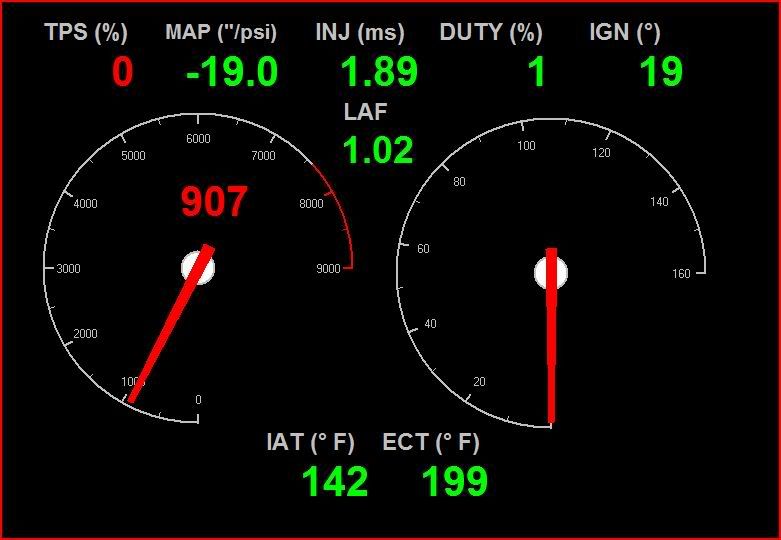
Average exhaust runner: 400* F Intake pipe: 112*
Note: The computer we were using at the time crashed after completing one test. We were unable to re-load this screen from here out, so a basic, more compact version, was quickly made.
Now, we raised the idle to 1,600 rpms and let it go for 10 minutes:

Average exhaust runner: 520* F Intake pipe: 122*
We then tested at 3,000 rpms for 5 minutes:

Average exhaust runner: 605* F Intake pipe: 125*
Test # 2 Aftermarket 4-1 Header
Once cooled down, we removed the OEM exhaust manifold and installed the aftermarket 4-1 header.
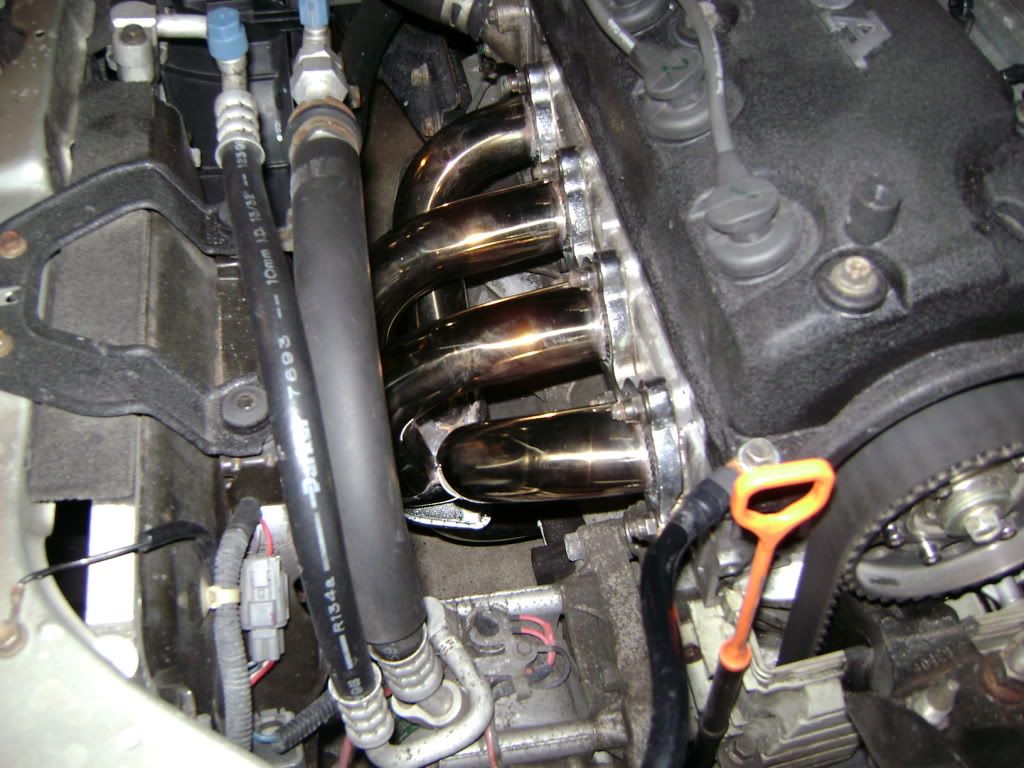
Now, we turn the car on and let idle for 20 minutes:
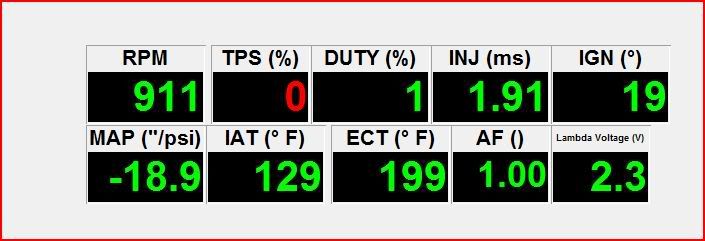
Average exhaust runner: 218* F Intake pipe: 100* F
Raised the idle to 1,600 rpms:

Average exhaust runner: 270* F Intake pipe: 118* F
Now, pressing on the gas and revving to 3,000 rpms:
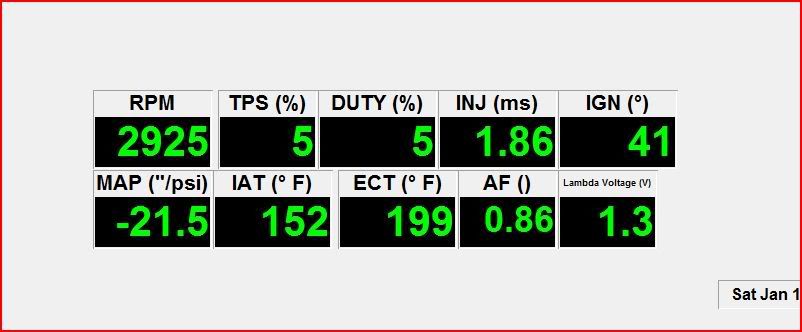
Average exhaust runner: 300* F Intake pipe: 128*
Note: We are seeing lower temperatures in the runners due to the fact that this header is dissipating the heat into the bay faster than the cast steel OEM manifold.
Test #3 Mishimoto Wrapped Aftermarket 4-1 Header
Again, we allowed the car to fully cool down and we then removed the header, wrapped it and re-installed it.
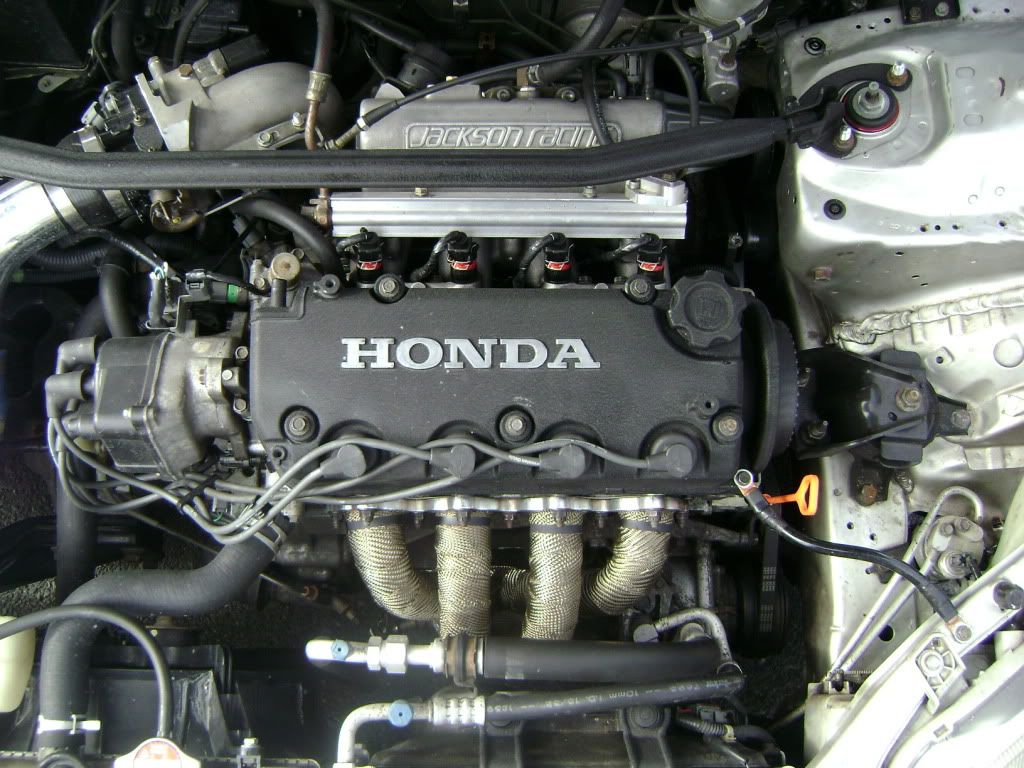
Once more, we allow the car to idle for 20 minutes:
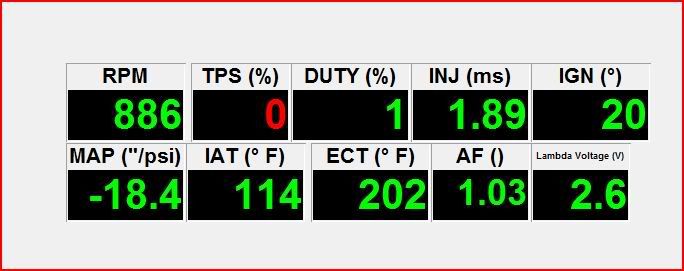
Average exhaust runner: 540* F Intake pipe: 75*
Set the idle to 1,600 rpms and let sit for 10 minutes:
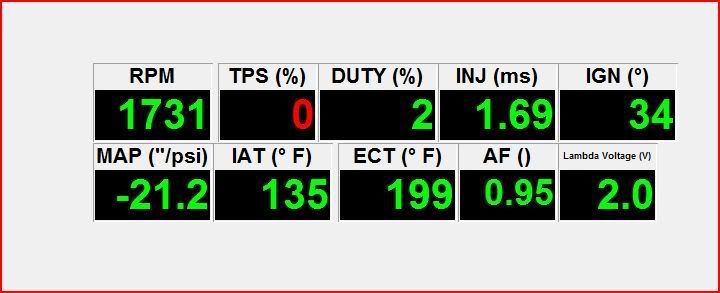
Average exhaust runner: 620* F Intake pipe: 88*
And once more revved the motor to 3,000 rpms:

Average exhaust runner: 730* F Intake pipe: 115*
Conclusion:
As you can see, the average intake pipe temperature was drastically reduced by up to 25%. The Mishimoto Heat Wrap does keep your engine bay cooler, resulting in a more efficiently running engine.
More pictures of installed header wrap.
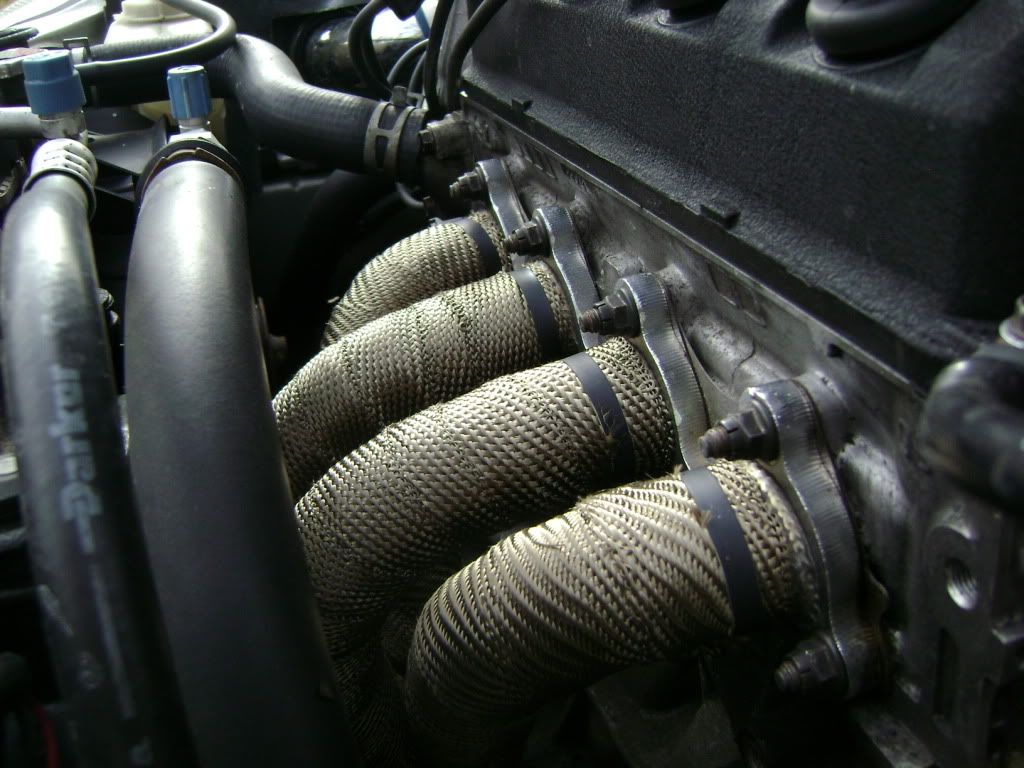
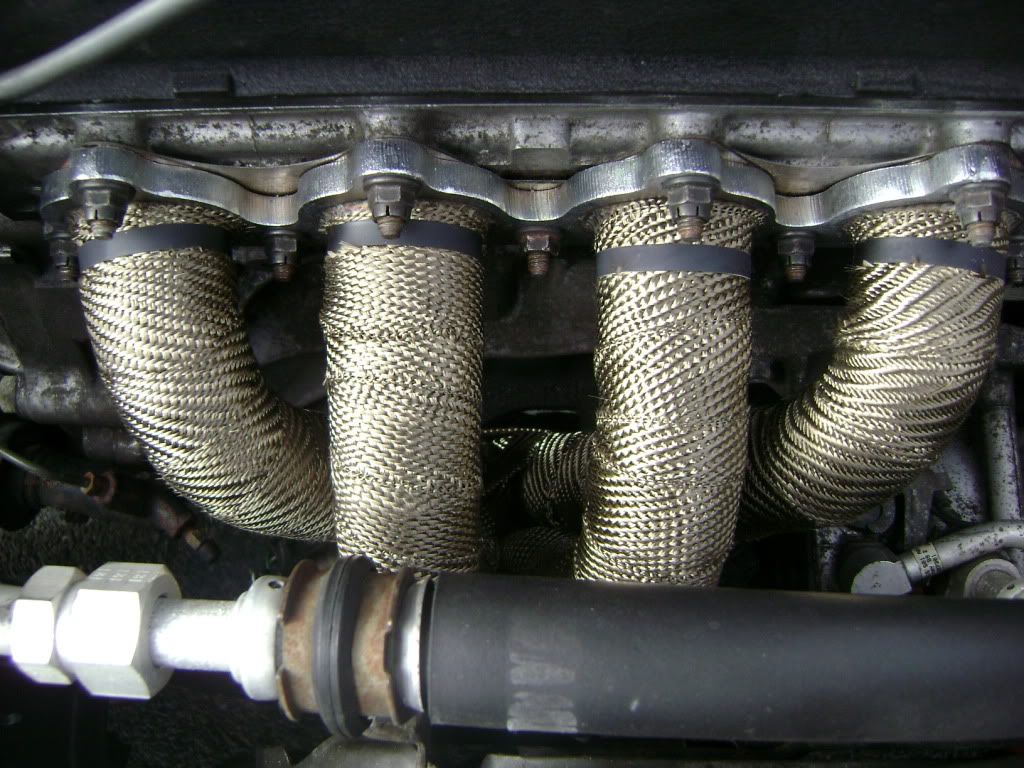
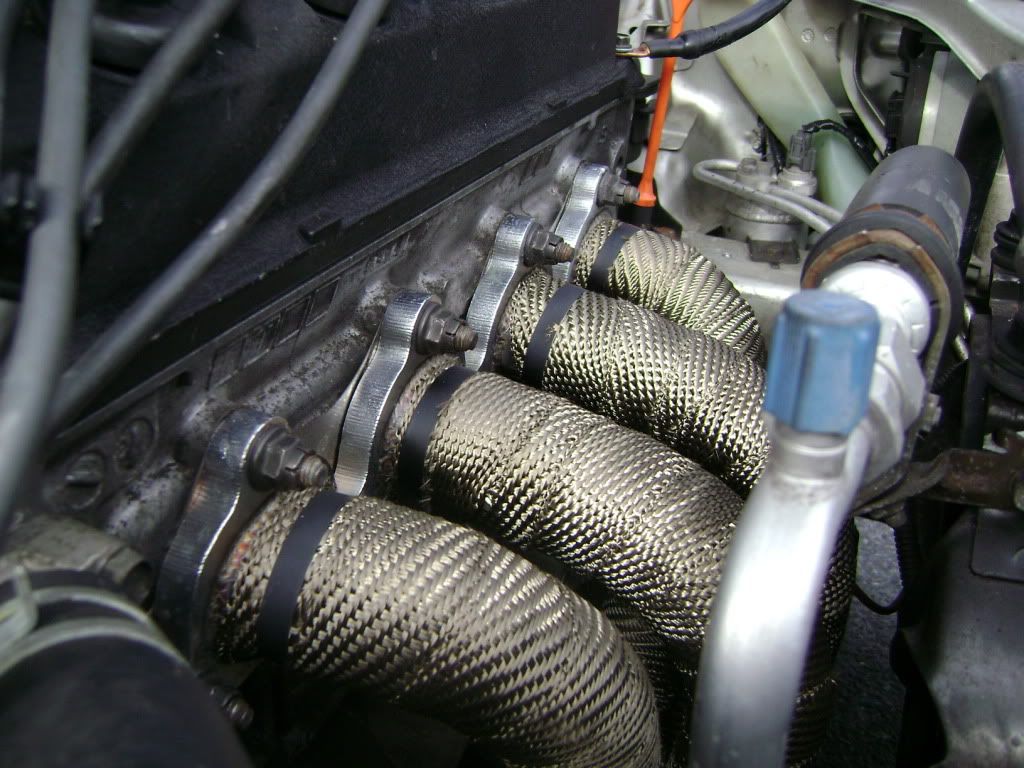
How can you do this yourself? Click the link below to find out how!
http://www.clubintegra.com/board/showthread.php?p=586510#post586510
Thanks!

